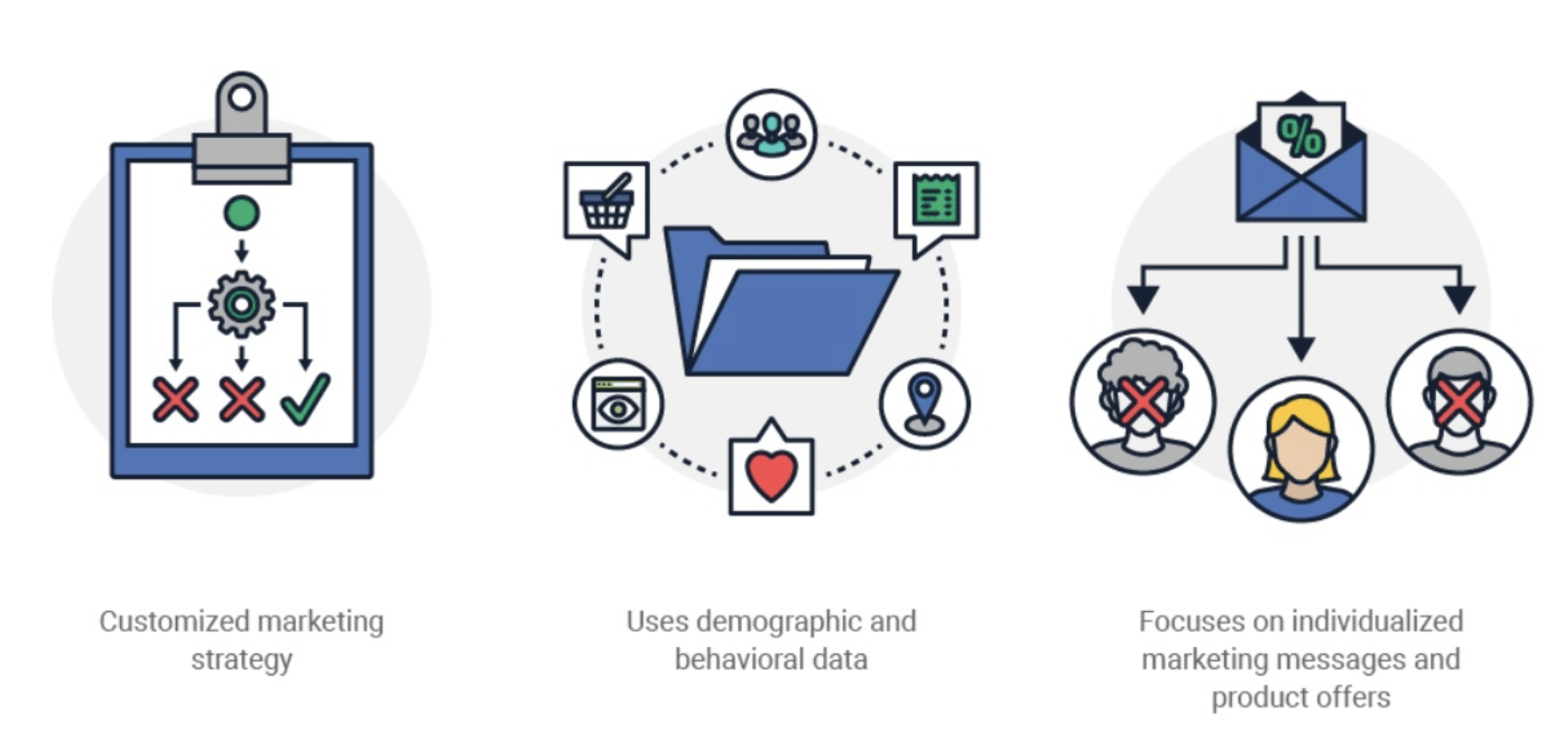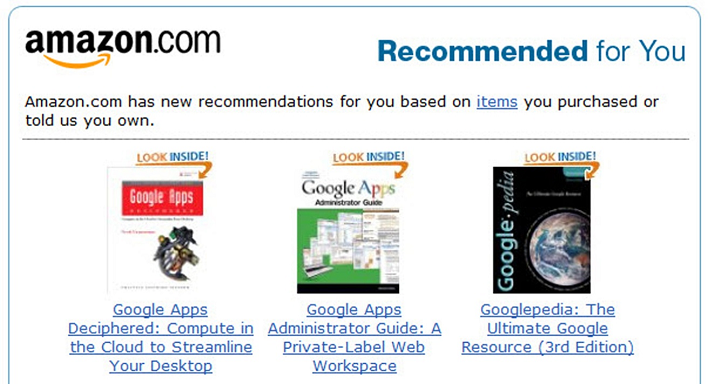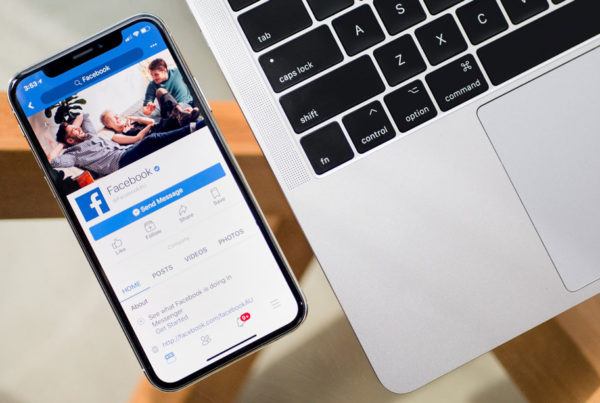Last updated on July 27th, 2025
Personalized marketing zeros in on what your potential customers want. The goal? Make every email and every click on your site feel like it was made just for your audience. It’s a smart play that brings your branding to life and turns casual browsers into engaged buyers.
Want to know how this impacts your bottom line? Stick with us. We’ll break down how personalized marketing isn’t just a nice-to-have; it’s a must in today’s digital marketplace. You’ll know precisely why and how personal touches can convert to business growth by the end of this post. Let’s get started.
What Is Personalized Marketing?
Personalized marketing means engaging with your individual customers, not just directing messages at them. It’s about delivering tailored communications to users based on data-driven insights. You gather data—what they browse, buy, or show interest in. Then, you use this data to customize your marketing content for each person.
The result? Your marketing feels relevant to each customer, increasing the likelihood that they will make a purchase.
5 Personalized Marketing Benefits For Your Business
In the modern marketplace, where online shopping is the norm, differentiating your business by making customers feel special has become increasingly important. With personalization efforts, you’re telling them, “Hey, I know what you like!”
This approach can help your business shine and keep customers coming back for more. Now, let’s walk through the five best ways personalized marketing can boost your business
A great source of personalised marketing is when it is generated using AI, Generative Engine Optimization helps you achieve that.
I. Boosts Engagement
Personalized content catches attention. When an email says, “Here’s something just for you, Alex,” it feels like a conversation, not a broadcast. For instance, Spotify’s personalized playlists get users listening—and staying—longer.
II. Enhances Customer Experience
Tailoring experiences makes customers feel understood. A website that suggests products based on past purchases, like Amazon’s “Recommended for you,” simplifies the shopping experience, making customers more likely to return.
III. Increases Conversion Rates
Personalization can lead to sales. Customers who receive birthday discounts might think, “Why not?”. This approach has proven effective for brands like Sephora with their birthday gifts program, increasing conversions and customer retention.
IV. Strengthens Brand Loyalty
Customers stick with brands that “get” them. A loyalty program that rewards purchases and activities—like how Nike’s app rewards fitness milestones—creates a deeper brand connection.
V. Enables Better Data Collection
Personalized marketing strategies rely on data, and as customers interact, they provide more information. Netflix leverages a self-reinforcing cycle to suggest shows, continually improving the marketing team’s effectiveness.
Personalized marketing allows you to connect with your customers deeply. But what’s the next step? How do you turn these advantages into actual results?
How To Personalize Your Marketing Effectively
1. Data Collection & Analysis
Let’s explore how personalized marketing works and why it’s so effective in turning casual browsers into loyal buyers.
Think of data collection and analysis like getting to know a friend. You’re learning what they like, what they do, and want, all to make your conversations with them more meaningful. Here are four steps to consider in this process:
1.1 Gather The Data
The first step is to collect information. Each action a customer takes—visiting your website, clicking a link, sharing a post, or making a purchase—provides insight into their buying journeys.
Over time, these actions form a comprehensive image of what attracts your customers and what they might avoid. The accumulation of these small details allows you to start crafting a marketing approach tailored to their interests.
Check out this eCommerce SEO checklist for a comprehensive look at optimizing these insights.
1.2 Harness Analytics Tools
After you gather the data, leverage analytics tools like Google Analytics to interpret it.
It provides insights beyond just the number of visitors to your site; it sheds light on visitor behavior. You can see how long people stay on each page, which links they click, and the paths they take through your site.
Within Google Analytics reports, you get to see the story behind the numbers. For example, if visitors spend a lot of time on a particular product page but aren’t making purchases, you should look into why that is.
Is there enough information? Is the call to action clear? These tools can help identify gaps between visitor interest and action, allowing you to make informed decisions on website layout, product placements, and content adjustments.
If you’re considering taking your business to a global stage, understand customer behaviors worldwide, as discussed in this guide on expanding into foreign markets. With this understanding, you can refine your website to meet visitor needs more effectively, guiding them smoothly to a purchase.
1.3 Interpret The Data
Once you collect the data, the next step is to make sense of it. Understand why customers are doing what they’re doing on your site.
Imagine seeing that many of your customers are into eco-friendly living, always looking at your solar power products. Here’s your chance to directly cater to their interests by highlighting various solar panels and living-off-the-grid kits.
This move aligns with what they’re into and will get them more excited about what you have to offer. If they’re into health and wellness, you might spotlight items or information supporting a healthy lifestyle. This could involve curating gut health content or showcasing products promoting overall well-being.
1.4 Act On Insights
If your data shows personalized email campaigns lead to more sales, focus on improving those emails. Or, if you see that people who watch your videos tend to buy more, make more videos to increase sales.
A McKinsey study found that companies doing a great job with personalization can make 40% more money from those efforts than others.
Remember, while collecting all this data, you need to be upfront about it. Make sure your customers know what you’re doing with their data and that they approve it. Transparency keeps trust high and your data clean.
2. Segmentation & Targeting
Segmentation and targeting are all about getting your messages to the right people. Like how you would choose a specific greeting card for each friend, you want to tailor your communication to fit your customers perfectly.
2.1 Craft Customer Segments
Think of customer segments as organizing your prospective customers into different circles of friends. You sort them based on what they look at on your site, where they’re from, and what they’ve bought before. Customer segmentation helps you keep track of who wants what.
For instance, you might notice a particular audience segment frequently visits your fitness and wellness articles, particularly those discussing how to enhance their workouts.
You can cater to this interest directly by sharing resources that they’ll find valuable. Point them toward a guide on the best creatine supplements to help them make informed choices about their supplement needs.
The goal is to match your products and messages with the right group’s interests for a more effective marketing strategy that speaks directly to your customer’s wants.
2.2 Gain Behavioral Insight
Look at what customers do. When a customer adds a product to their cart but doesn’t complete the purchase, it’s a clear indicator of interest coupled with hesitation. They may have paused because they found the checkout process complicated, or perhaps they’re still considering the price.
Just as you can reflect on your work habits or decisions by exploring self-evaluation examples to understand and improve your behavior, analyzing customer behavior can offer invaluable insights into how to better serve and convert your audience.
Here’s where you step in with a strategic nudge. A follow-up email marketing campaign with a small discount or a free shipping offer can be the gentle push needed to convert customer interest into a sale. This approach demonstrates your attentiveness to customer behavior.
2.3 Know Your Demographic
Knowing your customers’ age, gender, or other details can shape how you talk to them. For example, a younger demographic might be more reachable on marketing channels like Instagram or TikTok, while older demographics might prefer emails or Facebook.
2.4 Leverage Past Purchases
See who’s buying your expensive items. They might like to hear about your new, high-end products before everyone else. Give them the VIP treatment with sneak peeks and special deals as part of your personalized campaigns.
2.5 Go Beyond Basic Email
Don’t just send the same email to everyone. Tailor your emails to fit different groups as part of a broader personalization strategy. For instance, roll out the virtual red carpet for new customers with a hearty welcome email introducing them to your brand community. It could include a first-time purchase discount or a guide to what they can expect from your services.
Here’s the difference between a personalized vs non personalized email:
For your seasoned customers, appreciate their loyalty with exclusive rewards or insider information on upcoming sales and products. Perks could be in the form of a loyalty program that offers points, members-only discounts, or early access to new releases.
These gestures make loyal customers feel recognized and valued, increasing the chances of continued patronage and boosting customer engagement.
3. Tailored Content Delivery
Now, we’re talking about saying the right thing at the right time to the right person. It’s like making sure your gift feels special because it’s just for them, creating a one-to-one marketing dynamic.
3.1 Craft The Right Message
You got your segments; now talk to them like you know them. Don’t throw a wide net with a basic sales message. Choose your words and images to resonate with each unique group, creating personalized experiences.
For the eco-conscious segment, use imagery and words that reflect sustainability and responsibility. For the tech-savvy, lean into the latest gadgets and innovations, highlighting efficiency and cutting-edge features.
Consider the tone and style, too. The message to young urban professionals might be sleek and fast-paced, while communication with retirees could be more relaxed and comforting.
Take fitness enthusiasts among your audience, for example. They’re not just looking for workout advice; they’re looking for an experience that matches the adrenaline and focus of their routines. When you present articles on enhancing workouts, the language should be as active and energizing as the content.
Similarly, when speaking to retirees, our approach isn’t solely about the products, whether it’s medical alert systems or safety grab bars. It’s about the connection we create as we present these solutions.
We tell them, “Imagine a system that’s as simple to use as it is dependable, always within reach, much like a trusty neighbour.”. This way, we wrap the technology in comfort and companionship. Our goal is to offer more than just a product; we’re extending a helping hand and reassuring them that their needs and concerns are understood and important to us.
3.2 Focus On Timing
Timing can make or break your message. Send the discount offer when customers are just thinking about buying again or remind them about that gadget they liked but haven’t bought yet.
To optimize timing, you need to understand the customer’s journey and purchasing cycle. Analyze behavior patterns to predict when they’re most likely to make a purchase.
Is there a specific day they often shop on your site? Do they wait for seasonal sales? Understanding these habits allows you to schedule your messages when they’re most likely to take action.
3.3 Harness Dynamic Content
Imagine a website that changes based on who’s looking. Someone’s been checking out cookware? Next time they drop by, those items are the first thing they see. That’s dynamic content in action.
This strategy relies on sophisticated algorithms that track user behavior to adjust the content in real-time.
For instance, if a customer often searches for vegan recipes, the next time they visit, they could find a banner highlighting the latest vegan cookbook or a discount on vegan-friendly cookware. Dynamic content is a powerful tool to keep your website fresh, relevant, and personal for every visitor.
3.4 Learn From The Best
Look at Amazon—they’re the kings of “you might also like” suggestions. They show customers things they didn’t even know they wanted by paying attention to their shopping habits.
Consider how you can implement similar strategies in your business. Can you identify and utilize patterns in your customers’ purchasing behaviors to make predictive suggestions? Incorporating even a fraction of Amazon’s predictive analytics into your marketing approach could significantly impact customer satisfaction and sales.
3.5 Use Personalization Engines
Fortunately, you don’t have to do all the heavy lifting—there are tools available that can help streamline this process for you.
These engines work by analyzing various data points: what items a customer views, how much time they spend on certain pages, their purchase history, and even their behavior in response to previous marketing efforts.
With this data, the personalization engine can dynamically alter the content a customer sees, tailoring it to their interests and behaviors.
3.6 Provide Seamless User Experience
Personalization isn’t just about boosting sales; it’s about smoothing out the shopping journey. It’s showing the customer what they need before they know they need it, making shopping easy and fun.
Imagine a customer often buys gifts from you. With the holidays coming up, you can recommend your gift-wrapping service and include some personalized Christmas messages for their cards. Similarly, if a customer keeps buying running shoes, why not give them a deal on fitness accessories for their new kicks?
It’s about creating an ecosystem that feels designed just for them.
3.7 A/B Test and Refine
Don’t guess what works—test it. Show one message to one group and a different one to another, see which one does better, and use that info to make your content even sharper.
For instance, test 2 different email subject lines to see which yields a higher open rate. Or experiment with different product recommendation placements on your site to determine which layout drives more clicks.
Use the insights from these tests to refine your messaging, layout, and marketing strategies, ensuring that you’re communicating effectively and continuously improving the relevance and impact of your content.
Conclusion
Personalized marketing is a game-changer for boosting sales. It’s all about ensuring your customers feel like you’re speaking directly to them and understanding their unique needs and preferences. When done right, it turns the usual buying process into a journey tailored just for them.
Always remember to use the data you collect to fine-tune your approach. The more precise you are in addressing your customers’ interests, the more they’ll feel at home with your brand. Also, don’t forget to keep the conversation going. Follow up with customers after purchases to make sure they’re happy and encourage repeat business.
Ready to take your online presence to the next level with personalized marketing? Visit Woww, where we craft engaging experiences that resonate with your audience and convert customers.
With our specialized services in WordPress web design, SEO, eCommerce solutions, hosting, online marketing, and graphic design, we’ll help your business start, grow and truly thrive online. Explore our services to see how we can help your business shine.

Author Bio
Burkhard Berger is the founder of Novum™. You can follow him on his journey from 0 to 100,000 monthly visitors on novumhq.com. His articles include some of the best growth hacking strategies and digital scaling tactics that he has learned from his own successes and failures.











Recent Comments